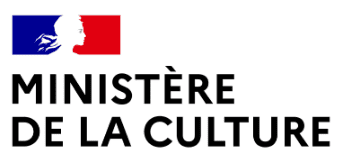Sobre las nubes (About the Clouds), the portrait of a city and a contemporary saga of a middle class viewed through its relationship with work, depicts the everyday lives of four people with an artistry that’s abundant yet sober, generous yet precise. The dramatisation, stripped of any effects, is entirely devoted to the attention it pays to the characters. Ramiro, Nora, Hernán and Lucía don’t know each other. The only thing they have in common is that they work or are looking for work, and they live in the same city. They never meet, but all of them cross paths with the young woman with aquiline features, a musical presence who discreetly harmonises the film, accompanying it with her gentle melodies. María Aparicio, observing in the background, leaves these solitary presences to develop in parallel. Without ever raising its voice, the film unfolds with restraint and moderation, focusing on humility. When, in the dead of night, a female police officer asks a cross-dressing singer to go and sing elsewhere as he lip-synchs Maria Callas’ rendition of Tacea la notte placida (How Peaceful was the Night), all the sadness of a world reduced to silence is encapsulated in a sequence of rare beauty. In this melancholic black and white painting, the poetics of the image elevate the everyday to the unusual, the gloom to sweet fantasy, in discrete epiphanies like those magic tricks performed with mischief or the savvy pleasure taken in reciting a theatrical script. “I was sad, but I’m better” says one of the characters at the end of the film. Just as the clouds over the city come and go, caught up in the infinite movement of time, the characters’ sadness eventually subsides and seems to disappear to “that place that no one has ever visited, that place we call the past”, in the words of Juan José Saer (Las Nubes).
(Louise Martin Papasian)María Aparicio
- International Competition
- 2022
-
 International Competition
International Competition
- 2022
SOBRE LAS NUBES
ABOUT THE CLOUDS
María Aparicio
Interview with María Aparicio
Sobre las nubes follows the daily lives of four people living in Córdoba, all middle class, and focuses on their relation to work, an essential dimension of the film. What led you to this project?
I was born in Córdoba and I have lived there in the same neighborhood all my life, which is the center, where Sobre las nubes was filmed. I could not say that I wanted to make a film about my city, I would not dare to assume that premise simply because I do not believe that there can be a totalizing look at what a city is. What I could say is that what the film shows has a lot to do with the life I live in Córdoba, with things I have observed over the years, with experiences enabled by my parents’ life and by the life they gave to my brother and me. On the other hand, the concept of work in a broad sense is something I am interested in thinking about, because in the relationship that people have with money and with the way to get it, a good part of the problems of this world are crystallized.
The film has the appearance of a choral film without being one; the four characters never meet, but they all cross paths at least once with the young woman with whom the film begins, who makes the link between them. Why did you choose this direction? And how did you work on the structure of the film?
The central structure of the film was constituted in the first versions of the script, but everything was rewritten and reformulated until the last day of shooting. From the very beginning there was the idea of filming four characters because I always thought that the multiplicity of stories could represent something of the collective experience of living in a city. At the same time, the first ideas of scenes were based on things I had observed in the street and that involved people of different ages and from different backgrounds. The fact that the characters do not cross paths with each other also forced me to find less visible links between them and to think more carefully about the interferences of space and time in the course of the film.
How did you choose your actors and how did you work with them? Did they participate in the elaboration of their character?
The process was very long and the actors were involved from a very early stage in the film. I had very little experience working with actors and I wasn’t interested in working with a traditional casting scheme. The virtuosity of the actors is not something I consider fundamental, quite the contrary. It seems more important to me that they are people with whom I like to talk and think and with whom I can share the intricate and complex task of inventing characters and being able to contain them cinematographically. That’s why the cast of the film is mostly made up of very close people with whom we share a good part of our daily lives in Córdoba, several of them with acting experience but also many who had never acted in their lives. Many of the rewrites of the script came from conversations we had with the four main characters and with Octavio Bertone, with whom we carried out all the acting work.
You inserted images from your short film Hombre bajo la lluvia, which featured Hernán’s job interview. Why did you make this choice and to what extent was this short film a precursor to Sobre las nubes?
When we shot the short film, the first version of Sobre las nubes was already written. I wanted to be able to shoot this film with better working conditions than when I shot my first film and that implied a long process of searching for financing. During a good part of that process, we didn’t manage to get any money and I really needed to shoot, so I decided to take a fragment of the film’s script and adapt it as a short film. Hernán’s job interview scene is one of the first that was written because I had gone through an interview very similar to that one several years ago and after making it, I began to observe more closely the world of work and its cruelties. That’s why making that short film was very useful for me to start exploring some of the central ideas of Sobre las nubes.
Almost all of the film is shot in a still-frame mode. How did you work with your cinematographer and why did you choose to shoot in black and white, in this format?
I wanted to distance the film from a purely realistic register. There are many everyday elements that have a central place in the stories of the characters, but I was interested in contrasting that with an austere but at the same time elaborated, intervened, constructed mise-en-scène. In that sense, I believe that black and white immediately dilutes a certain realism in the images because it is a register that does not correspond to the way we see. In turn, black and white is also related to some searches linked to analog photography that interested me and that I share with Santiago Sgarlatta, the director of photography, who was also involved with the film from the very beginning. On the other hand, the still shot and the black and white probably also have to do with the films I saw during the years of Sobre las nubes, many of them linked to the classical period.
The film also shows the characters in their relation to the city, and stages them in recurring spaces. Can you tell us about this dimension of the film?
Many things could be said about urban centers, but there is something that characterizes almost all of them equally, which is that social classes mix with each other. They do not necessarily dialogue or interact but they do mix, even in Cordoba where the police have a very strong segregation policy with the lower classes regarding the use of public space. This dimension of urbanity seems to me to be central because many of the tensions of the present and the daily tragedies of the world in which we live can be read there. There are also moments of redemption in cities. They are few but they exist. That dichotomy is what I see every day and where I tried to place this film.
You quote a number of texts from which passages are read or recited, including the poem Nubes by Jorge Luis Borges or the novel Las Nubes de Juan Jose Saer, from which the title is inspired. What influence did these texts have on the film?
The meaning of the clouds changed during the years of work on the film. At first, the rain was one of the elements that linked the characters and had a clearer relevance in the development of the plot. Later I realized that what really interested us, more than the rain, were the clouds, for reasons a bit intricate that I will try to explain briefly. In addition to the city and the work, time as a concept became very fundamental; the characters are filmed over the course of a year, their lives advance, change, and unfold based on what time does to them. And curiously, clouds are a wonderful manifestation of time: nothing in them is static, they are always in permanent movement, and movement is also a sign of life.
I ended up understanding this with Saer’s text (which is a small fragment of Las nubes, a wonderful novel) but above all with Borges’ poem, which I like very much that you mentioned it because it is mentioned in the credits of the film but it is not part of the final editing version. I would have loved to have been able to include it in the film but for mysterious editing reasons we couldn’t find a place for it. Borges’ poem goes like this:
There will not be a single thing that is not
a cloud. So are the cathedrals
of vast stone and biblical crystals
that time will level. It is the Odyssey
that changes like the sea. Something is different
every time we open it. The reflection
of your face is already different in the mirror
and the day is a dubious labyrinth.
We are the ones who leave. The numerous
cloud that melts in the west
is our image. Incessantly
the rose becomes another rose.
You are cloud, you are sea, you are oblivion.
You are also that which you have lost.
Interview by Louise Martin Papasian
-
 International Competition
International Competition
Technical sheet
Argentina / 2022 / Black & white / 146’
Original version : spanish
Subtitles : english
Script : María Aparicio, Nicolás Abello, Emanuel Diaz
Photography : Santiago Sgarlatta
Editing : Martín Sappia
Sound : Juan Manuel Yeri
Casting : Malena Leon, Eva Bianco, Pablo Limarzi, Leandro García Ponzo
Production : Pablo Ratto (Trivial Media).
Filmography :
Hombre bajo la lluvia, 2018
Las Calles, 2016.
- Autres films / International Competition






